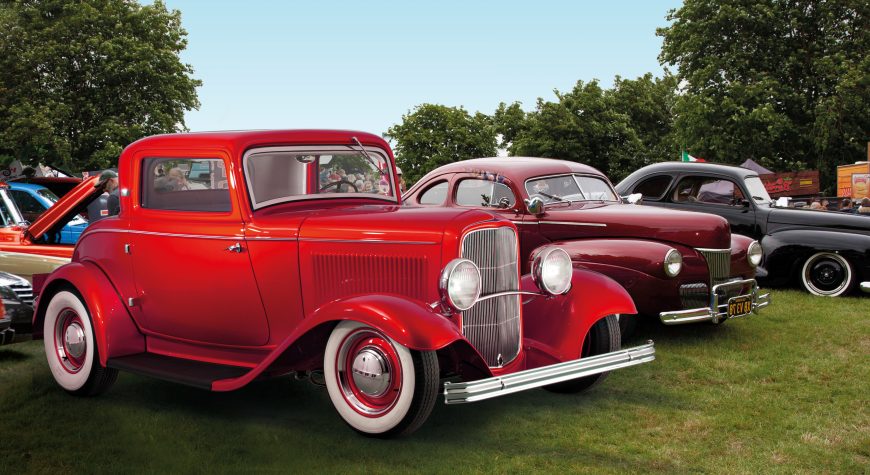A
Auto Express
Guest
With the Fiesta, Ford has proved yet again that small, cheap cars can be brilliant fun. The Fiesta might be new, but it will retain its reputation for being fun to drive as it’s better than ever through a series of bends.
Lighter steering in this new model means it’s easier to drive, especially in town, but that doesn’t take away from the driving experience on faster roads. There’s enough weight that you can feel the resistance coming through as you turn into a corner, and the feedback through the wheel means you can place the car on the road with ease. The grippy front-end helps too, as you can throw it in to corners even at high speed without fear of pushing wide.
A throttle lift or touch of braking will tighten the Fiesta’s line, and it’s rewarding to play with the little Ford’s chassis. Body control is very good, and bumps mid-corner don’t upset the balance - but what’s really amazing is that the car combines this agility with an impressively comfortable and composed ride. ST-Line models make things even more composed and fun with only a slight impact on ride quality.
The ride is good even on rutted roads here in Britain, partly because the Fiesta is so light - even the heaviest version is only a touch over 1,200kg. That helps it in so many areas: handling, ride, performance and even economy. Ford’s engineering magic means that even though the Fiesta is around 200kg heavier than the new Suzuki Swift, it feels almost as light on its feet.
The driving position is fantastic, as it feels sporty without being hard to get in and out of, and the steering wheel is just the right size to feel natural as well. The six-speed manual gear change isn’t quite as slick as the one in a Mazda 2, nor as light as the one in the new SEAT Ibiza, but it’s still really easy and fun to switch gears. These things also mean the Fiesta will be enjoyable to drive every day, not just when you find a great road.

Ford Fiesta - interior detail
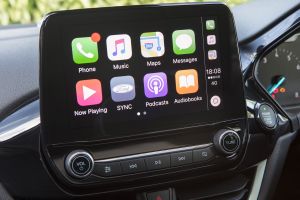
Spend another £300 for and you get a ten speaker Bang & Olufsen stereo.
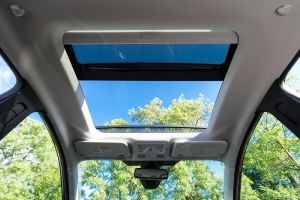
Ford Fiesta - panoramic roof
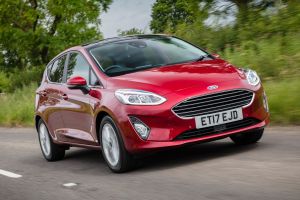
Ford Fiesta - front red
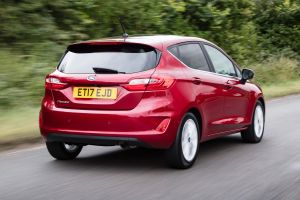
Ford Fiesta - rear red
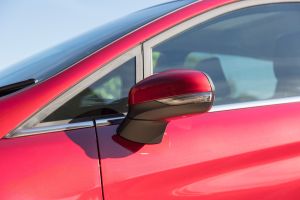
Ford Fiesta - wing mirror red
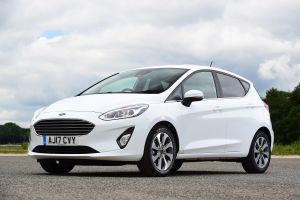
Ford Fiesta - front static
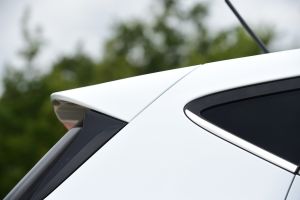
Ford Fiesta - profile
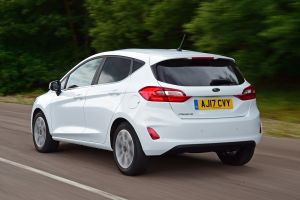
Ford Fiesta - rear
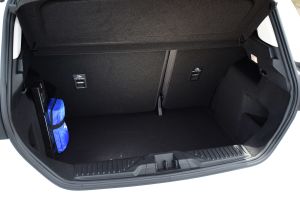
Ford Fiesta - boot
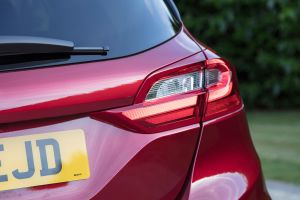
Ford Fiesta - rear detail
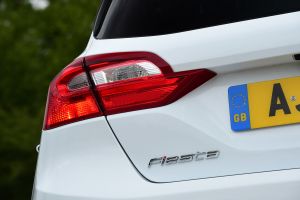
Our Choice: Ford Fiesta Zetec 1.0 EcoBoost (100PS).
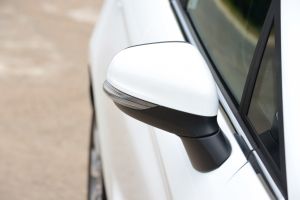
Ford Fiesta - wing mirror
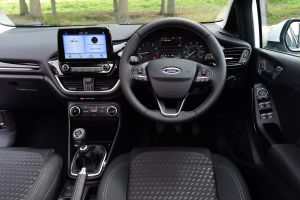
The interior is a big change with upmarket materials and a more modern layout.
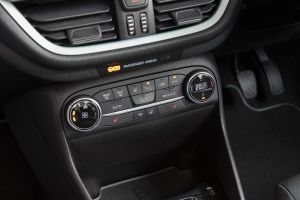
The cabin has ergonomically placed controls, while soft-touch materials replace hard plastic panels.
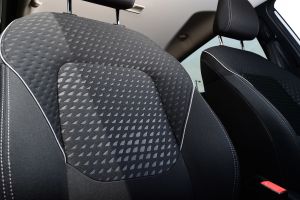
Ford Fiesta - front seat detail
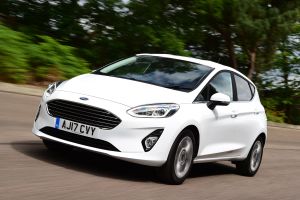
Ford has improved the Fiesta to keep it on top of the UK’s car sales charts.
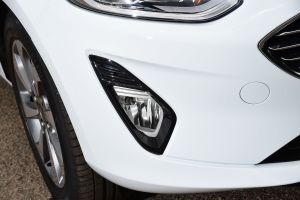
Ford Fiesta - fog light

The changes made to rear end styling give it a different stance on the road.
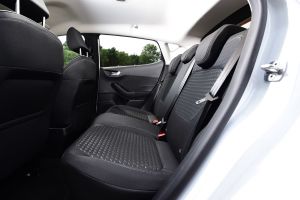
It feels a little bit more spacious inside with decent space in the back seats. While the boot is slightly larger too, with a wider opening than before.
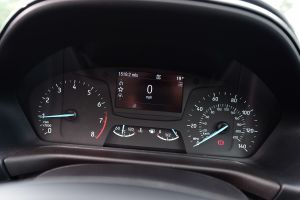
Ford Fiesta - dials
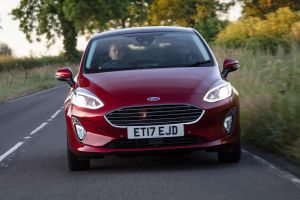
The design change is evolutionary as the car used the same platform as before.
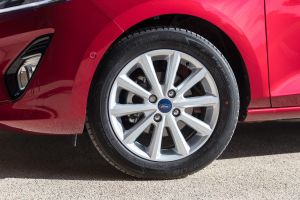
Ford Fiesta - wheel
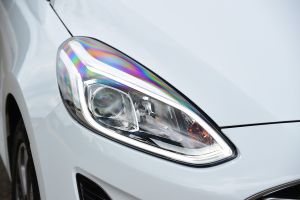
Ford Fiesta - front light
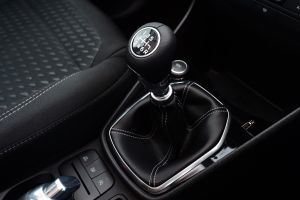
Ford Fiesta - transmission
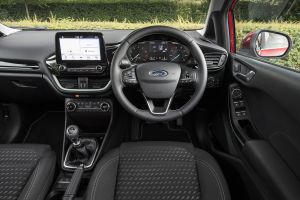
You get to choose from a basic 6.5-inch system and an 8-inch running Ford’s SYNC3 software.
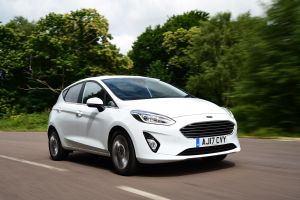
Ford Fiesta - front action
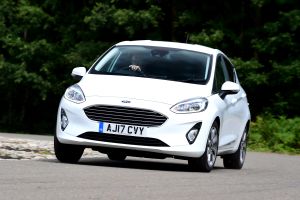
Ford Fiesta - front cornering
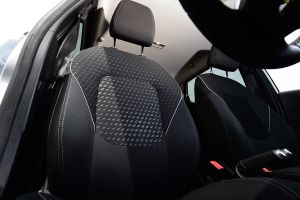
Ford Fiesta - front seat
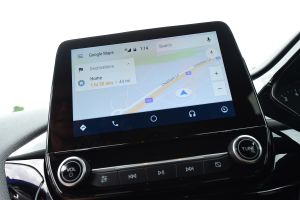
Ford Fiesta - sat-nav
Ford has also introduced mild-hybrid tech to the Fiesta range. The 48v system is available on the 1.0-litre 122bhp and 153bhp petrol engines and helps to increase fuel economy, reduce emissions, while also providing a useful boost in torque.
A six-speed manual transmission is standard for all cars, with the exception of the 1.1L Ti-VCT five-speed manual, and the 123bhp petrol version which is offered with a seven-speed DCT auto 'box.
Our pick of the engine range is the 1.0-litre EcoBoost three-cylinder petrol engine. It’s been around for a little while now, but remains a top choice because it mixes so many great attributes: it’s punchy, economical and really fun to use all at the same time. It’s quiet as well, matching its rivals for refinement on the move - but without losing the characterful thrum of the three-cylinder engine.
It’s available with 94bhp, 123bhp and 153bhp, and all are great options, but make sure you don’t overlook the lowest-powered version in the hunt for more performance. The turbocharger means it’s strong enough in the mid-range, and the 1.0-litre triple’s willingness to rev means it’s great fun to hustle along as well. More powerful versions are - unsurprisingly - more expensive, but the mid-spec variants offer enough pace for most needs.
The 94bhp EcoBoost takes 10.6s to go from 0-62mph, which goes down to 9.9s for the 123bhp engine (9.4s for the hybrid version) and to 8.9s for the 153bhp unit. The 1.5T EcoBoost powers the ST-badged cars from 0-62mph in 6.5 seconds, while the 84bhp 1.5-litre TDCi diesel manages the sprint in a leisurely 12.4s, sending its power via a six-speed manual gearbox.
Diesel fans will be impressed by the refinement of the discontinued 1.5-litre TDCi, there’s barely any clatter at idle, while working the unit hard results in nothing more intrusive than a muted roar. Sales were low, so there are few to choose from on the used car market.
The base 1.1-litre three-cylinder petrol with 74bhp and a five-speed manual transmission is considerably slower at 14.5 seconds and doesn’t really offer much in the way of economy savings or improved emissions over the EcoBoost units. It would certainly be a peculiar choice when buyers could look towards the more modern alternatives in the range.
Continue reading...
Lighter steering in this new model means it’s easier to drive, especially in town, but that doesn’t take away from the driving experience on faster roads. There’s enough weight that you can feel the resistance coming through as you turn into a corner, and the feedback through the wheel means you can place the car on the road with ease. The grippy front-end helps too, as you can throw it in to corners even at high speed without fear of pushing wide.
- SEE MORE Best small cars to buy 2021
A throttle lift or touch of braking will tighten the Fiesta’s line, and it’s rewarding to play with the little Ford’s chassis. Body control is very good, and bumps mid-corner don’t upset the balance - but what’s really amazing is that the car combines this agility with an impressively comfortable and composed ride. ST-Line models make things even more composed and fun with only a slight impact on ride quality.
The ride is good even on rutted roads here in Britain, partly because the Fiesta is so light - even the heaviest version is only a touch over 1,200kg. That helps it in so many areas: handling, ride, performance and even economy. Ford’s engineering magic means that even though the Fiesta is around 200kg heavier than the new Suzuki Swift, it feels almost as light on its feet.
The driving position is fantastic, as it feels sporty without being hard to get in and out of, and the steering wheel is just the right size to feel natural as well. The six-speed manual gear change isn’t quite as slick as the one in a Mazda 2, nor as light as the one in the new SEAT Ibiza, but it’s still really easy and fun to switch gears. These things also mean the Fiesta will be enjoyable to drive every day, not just when you find a great road.

Ford Fiesta - interior detail

Spend another £300 for and you get a ten speaker Bang & Olufsen stereo.

Ford Fiesta - panoramic roof

Ford Fiesta - front red

Ford Fiesta - rear red

Ford Fiesta - wing mirror red

Ford Fiesta - front static

Ford Fiesta - profile

Ford Fiesta - rear

Ford Fiesta - boot

Ford Fiesta - rear detail

Our Choice: Ford Fiesta Zetec 1.0 EcoBoost (100PS).

Ford Fiesta - wing mirror

The interior is a big change with upmarket materials and a more modern layout.

The cabin has ergonomically placed controls, while soft-touch materials replace hard plastic panels.

Ford Fiesta - front seat detail

Ford has improved the Fiesta to keep it on top of the UK’s car sales charts.

Ford Fiesta - fog light

The changes made to rear end styling give it a different stance on the road.

It feels a little bit more spacious inside with decent space in the back seats. While the boot is slightly larger too, with a wider opening than before.

Ford Fiesta - dials

The design change is evolutionary as the car used the same platform as before.

Ford Fiesta - wheel

Ford Fiesta - front light

Ford Fiesta - transmission

You get to choose from a basic 6.5-inch system and an 8-inch running Ford’s SYNC3 software.

Ford Fiesta - front action

Ford Fiesta - front cornering

Ford Fiesta - front seat

Ford Fiesta - sat-nav
Ford has also introduced mild-hybrid tech to the Fiesta range. The 48v system is available on the 1.0-litre 122bhp and 153bhp petrol engines and helps to increase fuel economy, reduce emissions, while also providing a useful boost in torque.
A six-speed manual transmission is standard for all cars, with the exception of the 1.1L Ti-VCT five-speed manual, and the 123bhp petrol version which is offered with a seven-speed DCT auto 'box.
Engines, 0-60 acceleration and top speed
Our pick of the engine range is the 1.0-litre EcoBoost three-cylinder petrol engine. It’s been around for a little while now, but remains a top choice because it mixes so many great attributes: it’s punchy, economical and really fun to use all at the same time. It’s quiet as well, matching its rivals for refinement on the move - but without losing the characterful thrum of the three-cylinder engine.
It’s available with 94bhp, 123bhp and 153bhp, and all are great options, but make sure you don’t overlook the lowest-powered version in the hunt for more performance. The turbocharger means it’s strong enough in the mid-range, and the 1.0-litre triple’s willingness to rev means it’s great fun to hustle along as well. More powerful versions are - unsurprisingly - more expensive, but the mid-spec variants offer enough pace for most needs.
- SEE MORE Best cheap hot hatchbacks
The 94bhp EcoBoost takes 10.6s to go from 0-62mph, which goes down to 9.9s for the 123bhp engine (9.4s for the hybrid version) and to 8.9s for the 153bhp unit. The 1.5T EcoBoost powers the ST-badged cars from 0-62mph in 6.5 seconds, while the 84bhp 1.5-litre TDCi diesel manages the sprint in a leisurely 12.4s, sending its power via a six-speed manual gearbox.
Diesel fans will be impressed by the refinement of the discontinued 1.5-litre TDCi, there’s barely any clatter at idle, while working the unit hard results in nothing more intrusive than a muted roar. Sales were low, so there are few to choose from on the used car market.
The base 1.1-litre three-cylinder petrol with 74bhp and a five-speed manual transmission is considerably slower at 14.5 seconds and doesn’t really offer much in the way of economy savings or improved emissions over the EcoBoost units. It would certainly be a peculiar choice when buyers could look towards the more modern alternatives in the range.
Continue reading...

